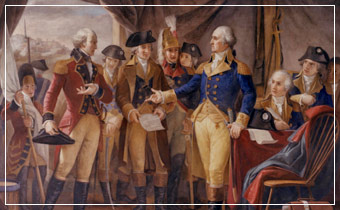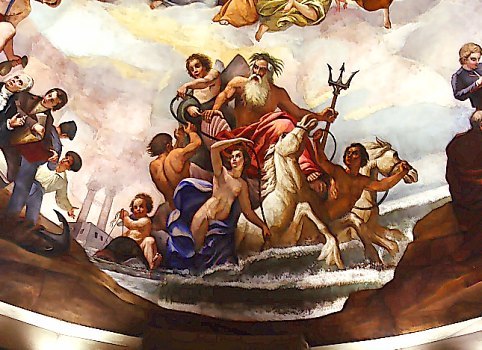|

By Francesco Isgro*
On July 1, 2008, President George Bush signed into law a bill authorizing the posthumous award of a Congressional Gold Medal to Constantino Brumidi, celebrated artist of the U.S. Capitol. The Congressional Gold Medal is the highest civilian award that can be bestowed by the U.S. Congress.  The Congress has passed bills awarding the Congressional Gold Medal only 135 times since the first Congress in 1789, nearly 220 years ago. The Congress has passed bills awarding the Congressional Gold Medal only 135 times since the first Congress in 1789, nearly 220 years ago.
Numerous members of Italian-American organizations worked for many years to lobby Congress to bestow the Medal on Brumidi posthumously. First to be recognized for the bill’s passage are its sponsors Senator Michael B. Enzi (R-WY) and Rep. Bill Pascrell, Jr. (D-NJ). Because of the two-thirds cosponsor requirement, Gold Medal bills are not passed without the total support, commitment and personal involvement of the sponsors.
Garnering support for the House bill were the National Italian American Foundation, the American Hellenic Educational Progressive Association and The Constantino Brumidi Society. In addition, the efforts of the Order Sons of Italy in America, The Lido Civic Club of Washington, D.C. and the OSIA Constantino Brumidi Lodge, Deer Park, N.Y.
Now that Congress has authorized the award, the next step is the designing and casting by the U.S. mint of a gold medal bearing Brumidi’s image. In 2009, an official ceremony by the Congress bestowing the Gold Medal on Brumidi is slated to take place in the Capitol Rotunda, beneath Brumidi’s “Apotheosis of Washington.” Afterward, the Medal will be permanently displayed in the new Capitol Visitor Center as part of an exhibit honoring Brumidi. Bronze copies will be offered for sale.
Constantino Brumidi was born July 26, 1805 in Rome, Italy, to Stauros Brumidi, an immigrant from Greece, and Anna Bianchini Brumidi, of Rome. He trained as an artist and painted in Rome, including at the Vatican. A respected artist, he was commissioned to do a portrait of Pope Pius IX.
Arriving on September 18, 1852 in New York City as a political refugee, he became an American citizen in 1857. Brumidi began painting in the U.S. Capitol on February 19, 1855, and spent more than 25 years painting, decorating and beautifying the corridors and committee rooms, and most notably the Rotunda of the Capitol. He created numerous paintings and decorations depicting the history, inventions, values and ideals of the United States, thus enhancing the dignity and beauty of the Capitol and inspiring tens of millions of visitors.
In just eleven months in 1865, he painted his masterpiece, the “Apotheosis of Washington,” in the canopy over the eye of the Capitol dome. In 1871, Brumidi created the first tribute to an African American in the Capitol when he placed the figure of Crispus Attucks at the center of his painting of the Revolutionary War-era Boston Massacre.

Brumidi died on February 19, 1880, exactly 25 years to the day that he first began work in the Capitol. He is buried in Glenwood Cemetery, Washington, D.C. In 1950, the U.S. Congress authorized and funded a marker on Brumidi’s grave in honor of his commitment to the decoration of the Capitol.
During the American phase of his life, Brumidi continued to paint in Catholic churches as he had in Rome. His work may be seen in St. Aloysius Church, Washington D.C., as well as in churches in Baltimore and Phil adelphia, and, most especially in St. Stephen’s Catholic Church in New York City, now called Our Lady of the Scapular and St. Stephen’s.• adelphia, and, most especially in St. Stephen’s Catholic Church in New York City, now called Our Lady of the Scapular and St. Stephen’s.•
*Info from various sources
|

![]()
 The Congress has passed bills awarding the Congressional Gold Medal only 135 times since the first Congress in 1789, nearly 220 years ago.
The Congress has passed bills awarding the Congressional Gold Medal only 135 times since the first Congress in 1789, nearly 220 years ago.

 adelphia, and, most especially in St. Stephen’s Catholic Church in New York City, now called Our Lady of the Scapular and St. Stephen’s.•
adelphia, and, most especially in St. Stephen’s Catholic Church in New York City, now called Our Lady of the Scapular and St. Stephen’s.•